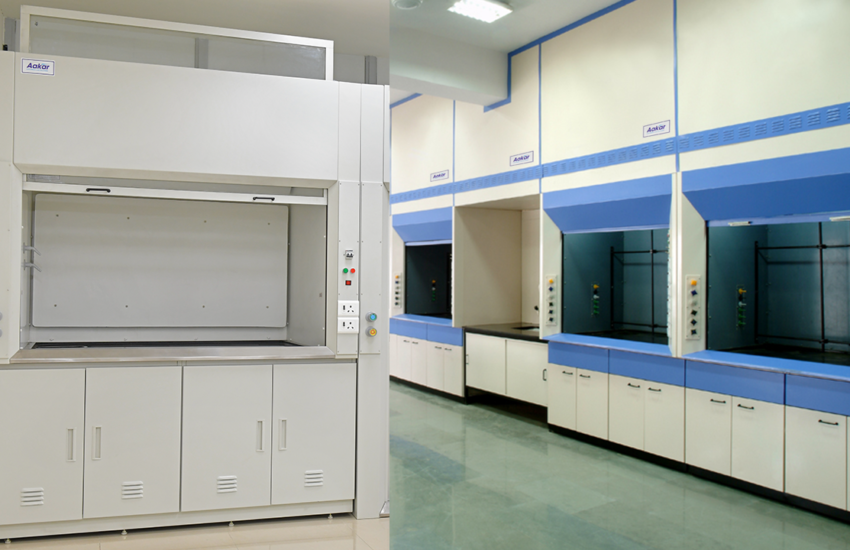Blog
How to know that the fume hood is efficient enough?
We all know that the fume hood is a type of local exhaust ventilation system inside the laboratory. Its function is to keep exhausting a defined enclosed cabinet while in use. But does your fume hood perform as per the international standards? How to know that the fume hood is efficient enough? What are the standards? What are the measurements? Can we measure its performance ourselves? We will have all the questions answered in rest of the article.
Fume hood must have negative pressure at any given point of time while in use. If negative pressure is not maintained inside then hazardous fumes will escape and enter the Laboratory working area. Negative pressure can be achieved by having aerodynamic design inside the fume hood with attaching blower of adequate capacity. International Standards says that fume hood should have average face velocity of 100 FPM (feet per minute) or 0.5 Mtr / Sec at the face of fume hood with a tolerance of +/- 20%. This means, face velocity will vary from 80-120 FPM or 0.4-0.6 Mtr/Sec as per NEPA 45 6-4.5 & A6-4.5 standards. Also, there other standards observed internationally regarding face velocity – few of them are ASHRAE (60-175 FPM), ANSI/AIHA (80-120 FPM), OSHA (60-100 FPM) & SEFA (75-100).
ASHRAE standards are widely followed globally. If our fume hood achieves face velocity within the given range, the fume hood can be called efficient enough. There are instruments available for measuring this parameter i.e. Face Velocity. Face velocity can be measured by using Anemometer which is easily available in the market. Put the sash open by one feet or 300 mm and place Anemometer in the plane of the face opened and measure the velocity. Repeat the exercise three for times at various positions of fume hood face and average it out. The average reading will be considered as Face Velocity of the fume hood. For example, we had three different readings of face velocity say: 90 FPM, 110 FPM & 105 FPM at different positions. Then average face velocity will be 101.6 FPM. This we can measure ourselves.
There is another instrument called Air Flow monitor which is built type mounted at front of fume hood. This will continuously monitor face velocity while fume hood is on. Face velocity is inversely proportionate of opening of sash (door). This means if sash is open wide then face velocity will decrease and vise versa. In many cases face velocity of fume hood is measured at 500mm sash opening also. Having Anemometer is a cheaper option. Does it mean that higher face velocity is better for exhausting fume hood? The answer is NO. Higher face velocity will generate turbulence inside the hood and may affect the air flow pattern. This may create air pocket and reverse flow may start and fumes may escape in this case. Therefore, we can say that if face velocity is within the given range the fume hood is efficient. Of course there are other parameters which affect the performance of exhaust of fume hood Like duct dia, length of duct, number of bends in duct layout, capacity of motor, impeller of blower, cross ventilation etc. In case of closed rooms, we can introduce make up air by having efficient HVAC system. Achieving better performance in fume hood requires smart engineering.


